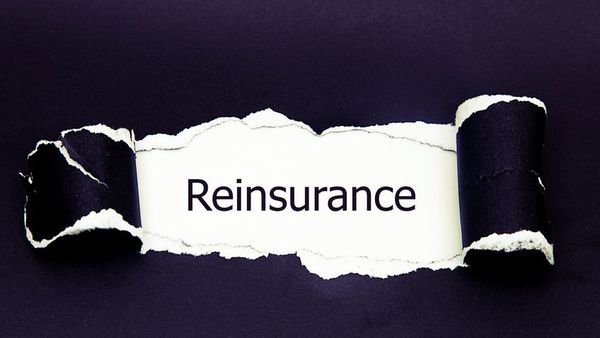Former American InternationalGroup Inc. (AIG) CEO Maurice “Hank” Greenberg found himselfagain trying to bat away one probing question after the next fromthe witness stand Thursday, facing a prosecutor's questions abouthow he dealt with a colleague’s warning that AIG could face steppedup regulatory scrutiny after the 2001 Enron accounting scandal.
|David Nachman, a senior enforcement lawyer for the New YorkAttorney General’s Office, zeroed in on a May 2002 memo issued toGreenberg by Joseph Umansky, then an AIG senior vice president. Inthe memo, Umansky allegedly warned Greenberg that the company mightneed to rethink a financial transaction — known as CAPCO — that wasaimed at converting auto-warranty insurance underwriting lossesinto capital losses considered less harmful by investors.
|“The CAPCO structure needs to be revamped in order to put usfarther from criticism in today’s environment,” Umansky wrote toGreenberg, according to Nachman, who read parts of the memo aloudin Manhattan Supreme Court.
|Greenberg ‘looked to professionaladvice’
Nachman, leaning forward at a lectern just a couple yards fromGreenberg, asked the former AIG chairman what he did in response toUmansky’s memo.
“I wanted to talk to the lawyers [at AIG] and find out whattheir views are” about whether to revamp the transaction’sstructure, replied Greenberg, 91. The answer echoed a refrain thathas become common in the two-week-old civil fraud trial againstGreenberg—he has repeatedly stated that he looked to professionaladvice from lawyers and accountants.
|Nachman, who often begins a series of questions in a low-keymanner before escalating the pitch and intensity of his voice, didnot let up.
|“Are you saying you recall consulting with counsel?” heasked.
|“I’m not saying that,” said Greenberg, who often uses a level,softer voice when responding to questions. “I likely would havewanted to do that.”
|Greenberg: ‘I can’t recall’
Nachman came back at him, “Do you recall taking any steps inresponse to this memo?”
“I can’t recall.”
|“Why it was necessary to revamp this structure?” Nachmancontinued. “What criticism may AIG have come under?”
|Again, Greenberg said, “I can’t recall.”
|The exchange was emblematic of the standoff between Nachman andGreenberg, who spent his third straight day on the witness stand.It was also similar to the way their exchanges have unfolded thisweek.
|Continue reading...
||
(Photo: iStock)
|Reinsurance transaction basis of firstclaim
The more than two hours of testimony on Thursday again focused on areinsurance transaction at the heart of one of the state’s twoclaims against Greenberg: That he orchestrated a transaction thatwrongfully converted underwriting losses from the auto-warrantysegment of AIG’s insurance portfolio into capital losses, givinginvestors a false picture of the company’s health.
In addition to the 2002 Umansky memo, Nachman also read from anAIG Securities and Exchange Commission 10-K filing for the year2000 that he said included no mention of the auto-warrantyloss-conversion transaction. He also attempted to grill Greenbergabout a management representation letter sent from AIG toPricewaterhouseCoopers (PWC) and signed by Greenberg.
|Nachman said that letter was intended to give a “complete andaccurate” list of “special purpose entities”—such as reinsurancevehicles for converting losses—and that it did not include theauto-warranty-related vehicle. The implication was that AIG hadallegedly misled PWC in the run-up to an audit of AIG’s 2001financials.
|Justice Ramos takes over
Early in the day, according to Bloomberg News, it was state SupremeCourt Justice Charles Ramos who took over the room amid the benchtrial. He reportedly told Greenberg he had lost sleep contemplatingwhy Greenberg would have allowed the CAPCO arrangement to proceed,and he asked Greenberg why.
“I look at this auto-warranty business,” Ramos said, accordingto Bloomberg. “It wasn’t going to bring back the losses. It wasn’tgoing to correct the mistakes that were made in the auto-warrantybusiness. Why would AIG go through the CAPCO transaction in thefirst place? What was the motivation?”
|Greenberg said it was done to alleviate certain managers’worries that they would be held to account for a bad program run bya separate division of AIG.
|“That was the only reason,” said Greenberg, according toBloomberg. “They wanted this off their back.”
|11 years and counting
Former state Attorney General Eliot Spitzer brought the case in2005, alleging nine different wrongful financial acts. Afterseveral appeals and narrowing by the government, the lawsuit nowfocuses on just two alleged sham transactions and seeksdisgorgement of $52 million in total from Greenberg andco-defendant Howard Smith, a former AIG chief financialofficer.
David Boies of Boies Schiller & Flexner is representingGreenberg; Vincent Sama, a partner at Kaye Scholer, is leadingSmith's defense.
|In the second alleged transaction—not covered in Thursday’squestioning — the government claims Greenberg and Smith helpedorchestrate a fraudulent reinsurance deal between AIG and GeneralReinsurance Corp. The transaction allegedly pumped up AIG’sreserves by $500 million in 2000 and 2001.
|Under state law, Greenberg and Smith are not afforded a jurytrial because the government is not asking for damages, but rathera forfeit of past bonuses from Greenberg and Smith. State AttorneyGeneral Eric Schneiderman’s office is also asking for injunctiverelief that would ban both Greenberg and Smith from both thesecurities industry and from acting as a public company’s officeror director.
|On Tuesday, Greenberg’s first day on the stand, he acknowledgedlearning from an actuary in 1999 that the auto-warranty insuranceline was expected to lose several hundred millions of dollars inthe coming years.
|Related: Greenberg questioned about transaction memo in AIGfraud trial
|Jason Grant is a former practicing lawyer. From 2002 to2008, he handled legal matters on behalf of AIG as outside counsel.He was not involved with and had no knowledge of the transactionsunderlying the case. He can be reached via email or on Twitter @JasonBarrGrant.
|Save
|Save
Want to continue reading?
Become a Free PropertyCasualty360 Digital Reader
Your access to unlimited PropertyCasualty360 content isn’t changing.
Once you are an ALM digital member, you’ll receive:
- All PropertyCasualty360.com news coverage, best practices, and in-depth analysis.
- Educational webcasts, resources from industry leaders, and informative newsletters.
- Other award-winning websites including BenefitsPRO.com and ThinkAdvisor.com.
Already have an account? Sign In
© 2024 ALM Global, LLC, All Rights Reserved. Request academic re-use from www.copyright.com. All other uses, submit a request to [email protected]. For more information visit Asset & Logo Licensing.








